-
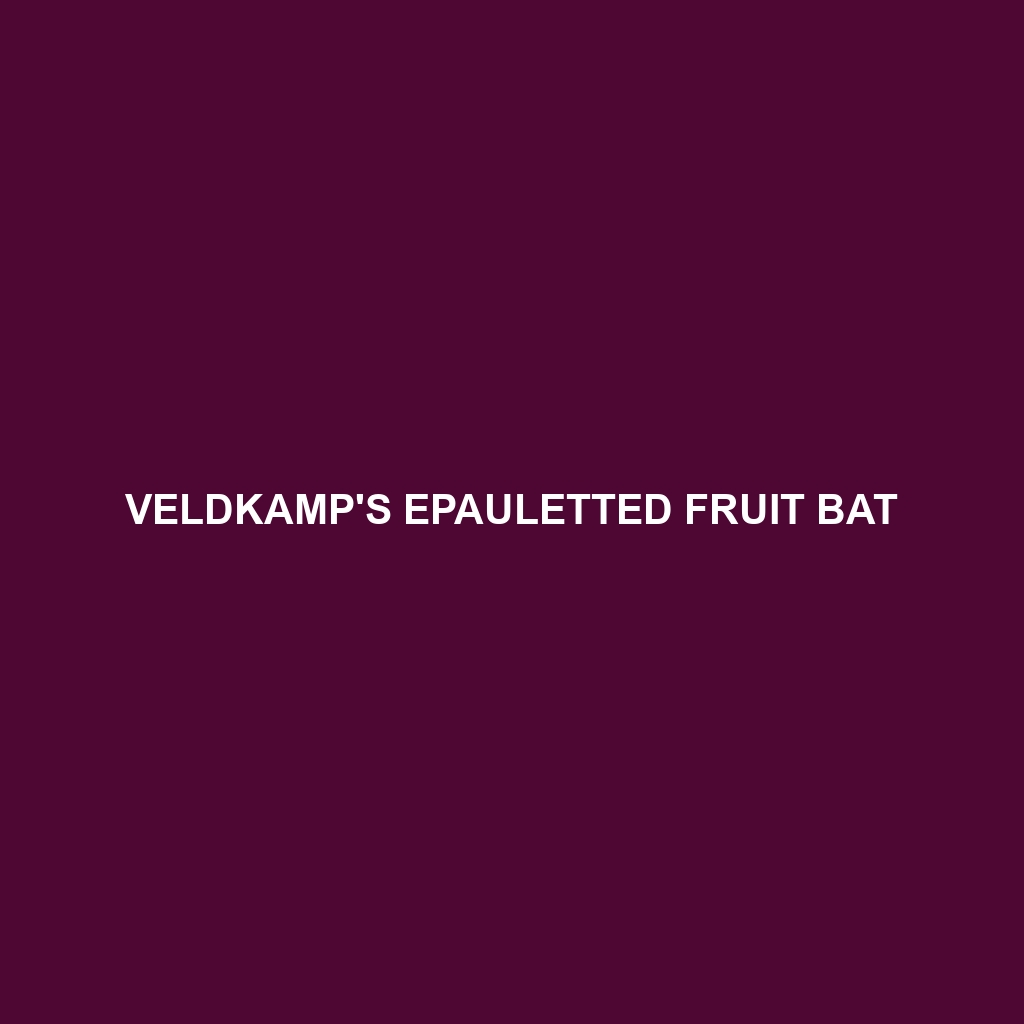
Veldkamp’s Epauletted Fruit Bat
Discover the fascinating world of the Veldkamp’s Epauletted Fruit Bat, a vital species found in the tropical and subtropical rainforests of Central and Western Africa. With its striking epaulettes and agile flight, this nocturnal bat plays a crucial role in its ecosystem through seed dispersal and pollination, while facing challenges from habitat loss. Learn more…
-
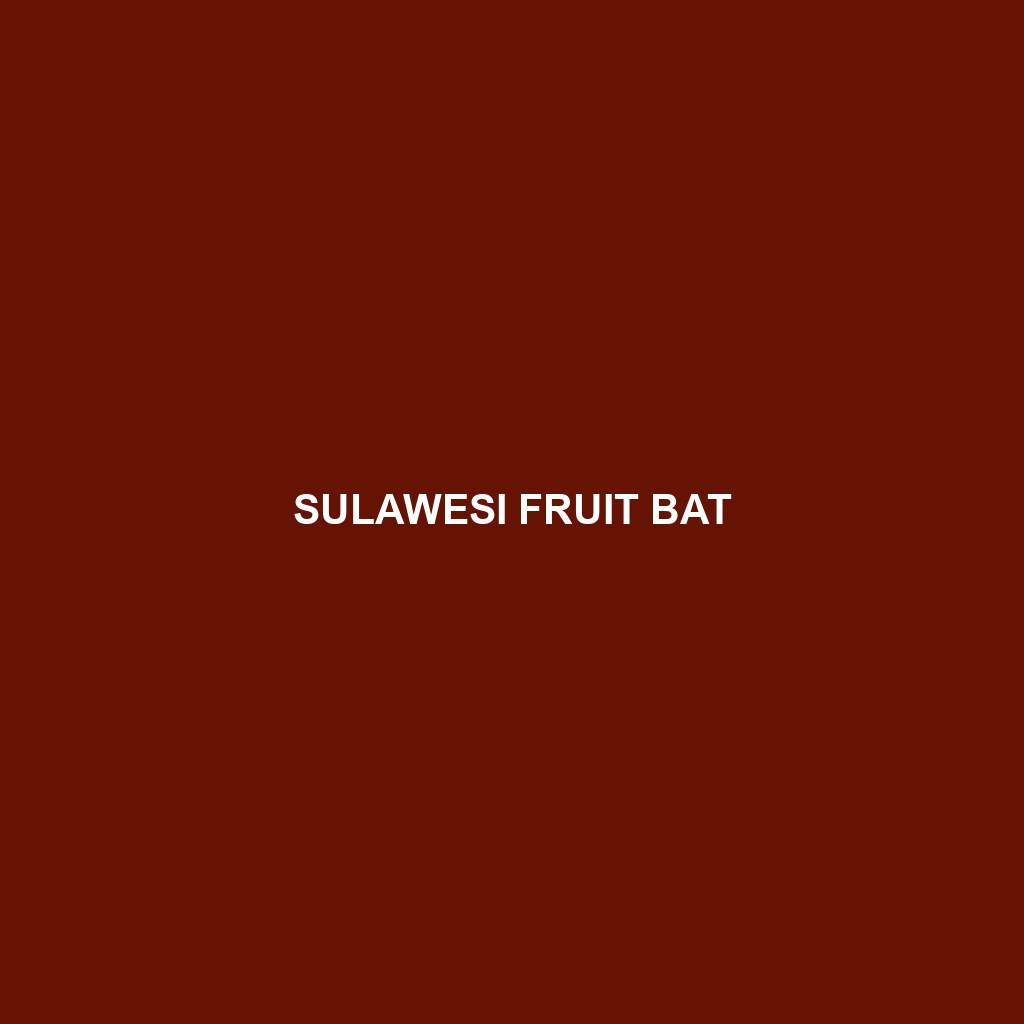
Sulawesi Fruit Bat
Discover the fascinating world of the Sulawesi Fruit Bat, an endangered species thriving in the lush rainforests of Indonesia. With its impressive wingspan, nocturnal foraging habits, and vital role in pollination and seed dispersal, this remarkable bat is crucial to the ecological balance of its habitat. Learn about its unique behaviors, physical characteristics, and the…
-
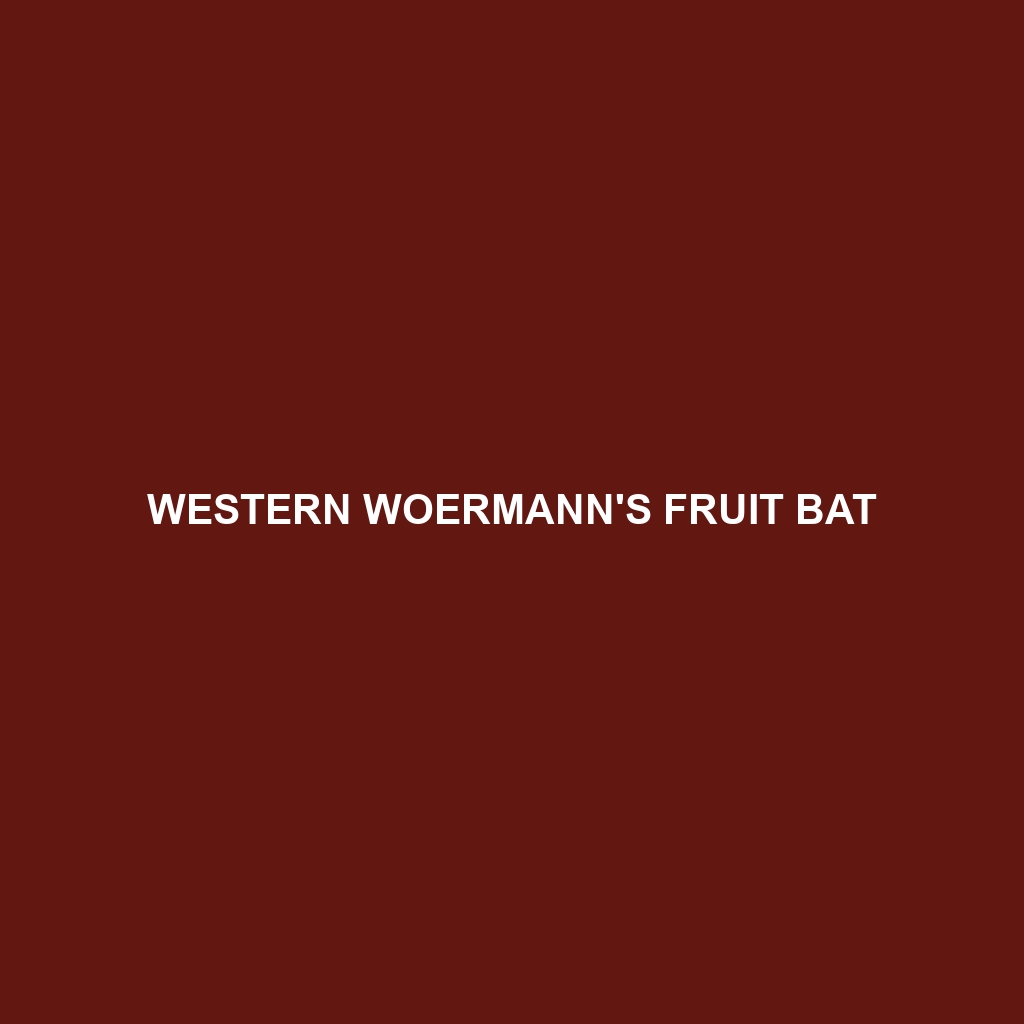
Western Woermann’s Fruit Bat
Discover the fascinating world of the Western Woermann’s Fruit Bat, a vital species found in the lush forests of West Africa. With their remarkable echolocation abilities and critical role in seed dispersal and pollination, these medium-sized bats contribute significantly to their ecosystem’s health and biodiversity. Learn about their unique behaviors, dietary preferences, and the conservation…
-

Hammer-headed Fruit Bat
Discover the fascinating Hammer-headed Fruit Bat (*Hypsignathus monstrosus*), a remarkable species thriving in the tropical forests of Central and West Africa. With their distinctive hammer-shaped heads and impressive wingspans, these nocturnal fruit foragers play a vital role in seed dispersal and forest regeneration. Learn about their unique behaviors, conservation challenges, and the essential ecological contributions…
-

Lesser Epauletted Fruit Bat
Discover the intriguing world of the **Lesser Epauletted Fruit Bat** (*Micropteropus pusillus*), a nocturnal inhabitant of Africa’s lush tropical forests. Renowned for its social behavior and vital role in seed dispersal, this unique bat species showcases remarkable adaptability amidst threats from habitat loss. Dive into our blog post to learn about its physical characteristics, dietary…
-

Wahlberg’s Epauletted Fruit Bat
Discover the fascinating world of Wahlberg’s Epauletted Fruit Bat, a unique species found in Africa’s subtropical forests. With its striking yellow-orange epaulettes and vital role as a pollinator and seed disperser, this nocturnal creature is essential for maintaining biodiversity. Learn about its habitat, diet, and the challenges it faces in a changing environment.
-

Büttikofer’s Epauletted Fruit Bat
Discover the fascinating world of Büttikofer’s Epauletted Fruit Bat, a nocturnal species native to the rainforests of West and Central Africa. With its stunning physical traits, crucial role in seed dispersal, and unique social behavior, this vulnerable bat plays an essential part in maintaining the ecological balance of its habitat. Learn more about this remarkable…
-
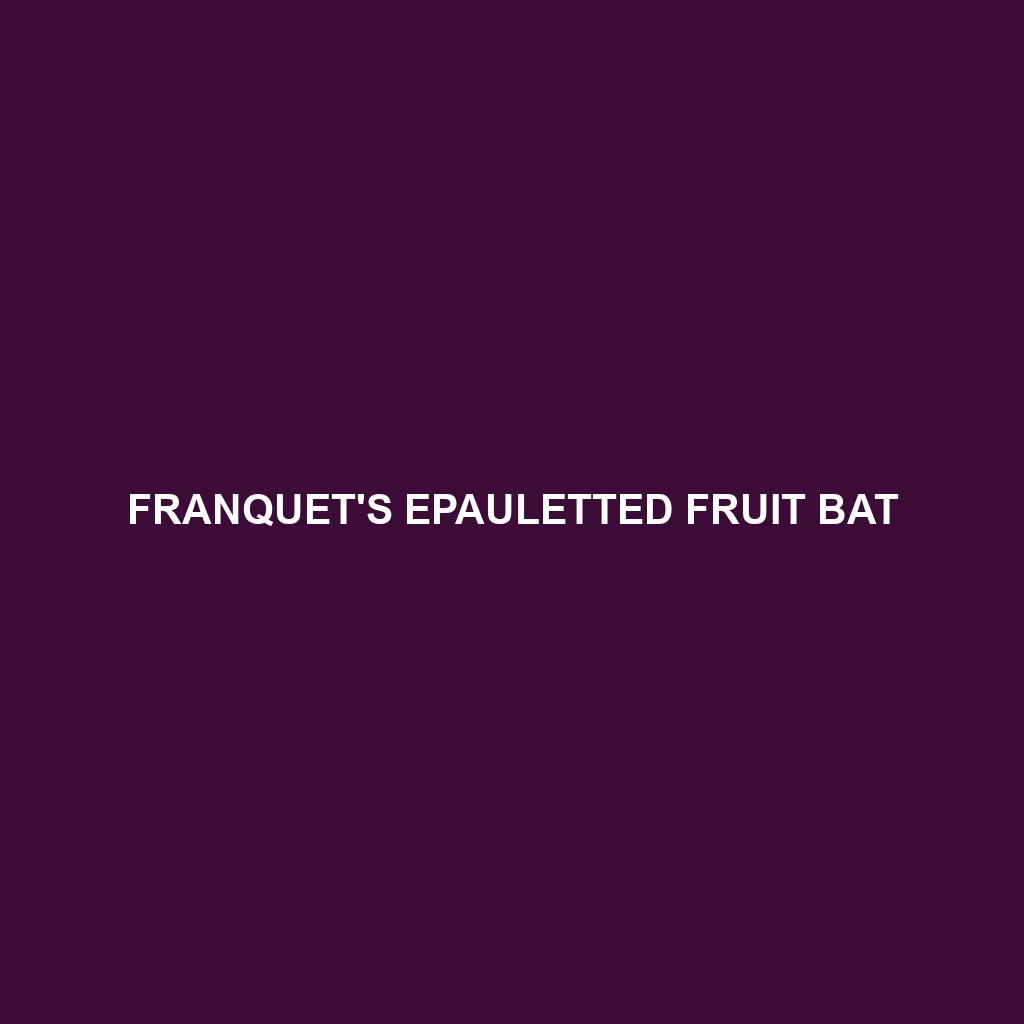
Franquet’s Epauletted Fruit Bat
Discover the fascinating world of Franquet’s Epauletted Fruit Bat (*Micropteropus franquetti*), a unique species native to the tropical forests of Central and West Africa. Known for its distinctive tufted “epaulettes” and incredible foraging abilities, this medium-sized bat plays a vital role in seed dispersal, helping to maintain the health of its ecosystem. Learn about its…
-
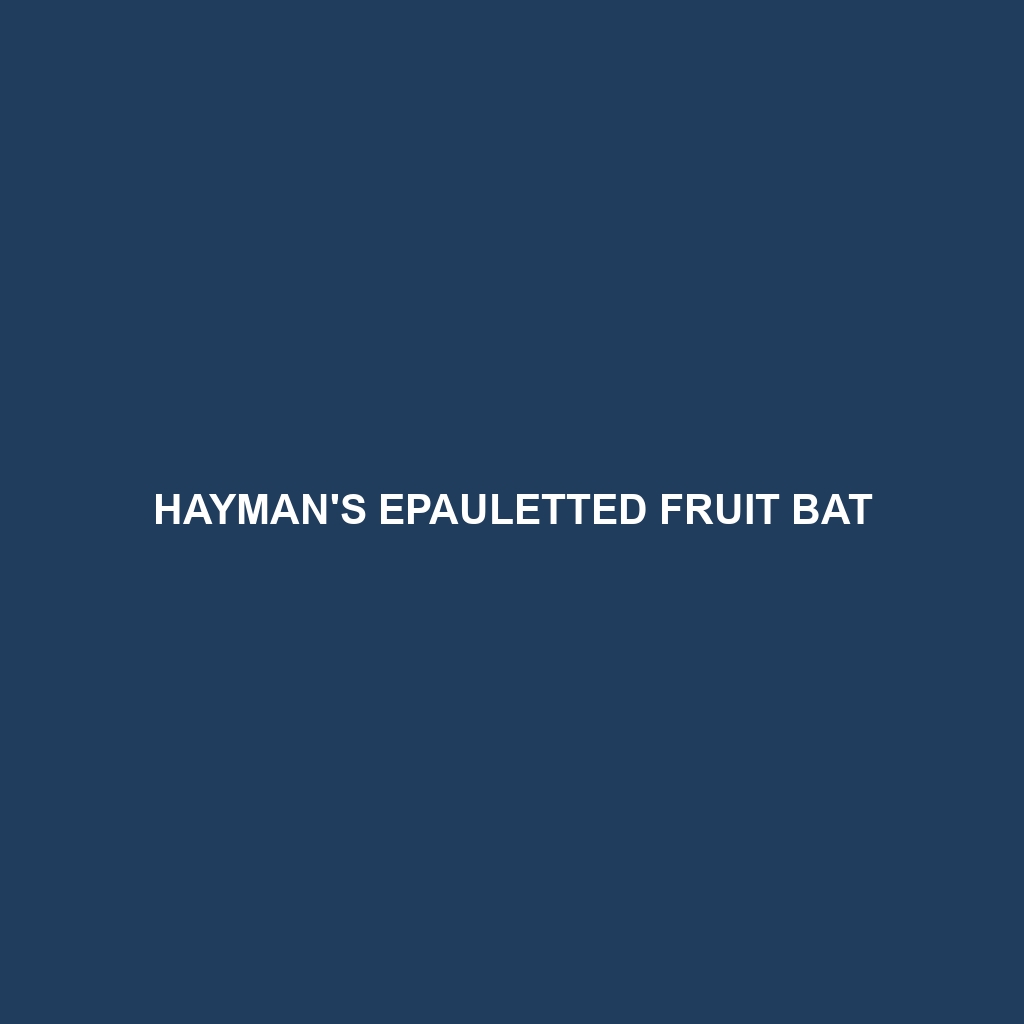
Little Epauletted Fruit Bat
Explore the fascinating world of the **Little Epauletted Fruit Bat**, a unique species found in the lush forests of West and Central Africa. This nocturnal mammal, known for its distinctive fur epaulettes and vital role in seed dispersal, faces threats from habitat loss and is currently classified as vulnerable. Learn about its habitat, behaviors, diet,…
-
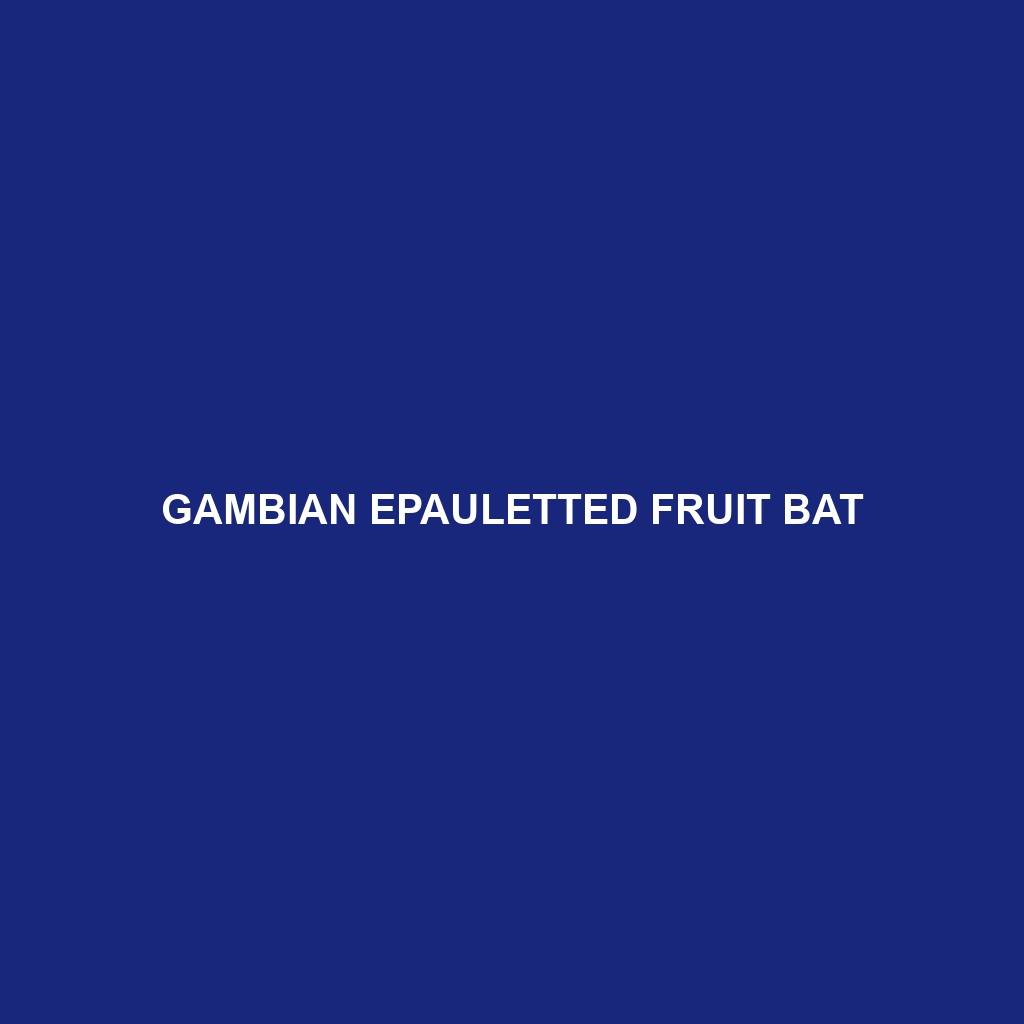
Gambian Epauletted Fruit Bat
Discover the fascinating world of the Gambian Epauletted Fruit Bat (Epomophorus gambianus), a vital nocturnal resident of West Africa’s tropical forests. With its distinctive yellow epaulettes and a diet primarily consisting of fruits, this species plays a crucial role in seed dispersal and ecosystem health. Learn about its habitat, physical characteristics, and the conservation challenges…
Search
Popular Posts
-
Lygosoma corpulentum
Discover the Lygosoma corpulentum, or fat skink, a robust insectivorous lizard native to Southeast Asia’s moist tropical rainforests and varying habitats. With a stocky body, impressive camouflage, and remarkable adaptability, this ovoviviparous species plays a crucial role in maintaining ecological balance.
-
Lygosoma boehmei
Lygosoma boehmei is a slender, nocturnal insectivore found in humid tropical rainforests and savannas of Southeast Asia, exhibiting a smooth, camouflaging texture and remarkable burrowing abilities. This vulnerable species plays a crucial role in its ecosystem by controlling insect populations and serving as prey for larger predators.
-
Lygosoma bampfyldei
Lygosoma bampfyldei, commonly found in tropical and subtropical regions, is a moderately sized lizard measuring 15 to 25 cm, known for its elongated body and glossy, camouflage coloration. This insectivorous species thrives in moist habitats and plays a vital role in maintaining ecological balance by controlling insect populations.
Categories
Tags
animal adaptations (924) animal behavior (5000) animal reproduction (865) behavior (920) biodiversity (7853) conservation (1670) conservation efforts (1778) conservation status (5748) diet (2104) ecological balance (2087) ecological role (1952) ecosystem (1469) ecosystem role (2901) endangered species (2514) habitat (3280) habitat conservation (1136) Habitat Destruction (1421) habitat loss (3385) herpetology (870) insectivorous reptiles (948) IUCN Red List (1971) lizard behavior (881) lizard diet (944) lizard reproduction (1101) nocturnal animals (2754) nocturnal behavior (2592) nocturnal reptiles (1061) physical characteristics (2058) predator-prey relationships (927) reproduction (2890) reptile behavior (1037) reptile conservation (1348) reptile reproduction (1069) rodent species (1325) seed dispersal (2145) Seed Disperser (979) small mammals (1168) snake behavior (952) snake diet (1061) snake reproduction (1129) tropical forests (948) Vulnerable Species (4926) wildlife (2511) wildlife conservation (5355) wildlife protection (1008)


